Finding the perfect bike that suits every type of ride is no easy feat, but the Trifox Complete Bike strikes the ideal balance between versatility, performance, and comfort.
Designed for riders who need a bike that can handle a variety of conditions, the Trifox Complete Bike offers a seamless transition from city roads to rugged trails and everything in between. Whether you're an avid commuter, weekend trail rider, or someone who enjoys the occasional adventure, this bike has you covered.
One of the key features of the Trifox Complete Bike is its versatility. Built with a flexible geometry that accommodates various riding styles, it allows you to easily switch between road biking, mountain biking, or even light touring. The durable aluminum or carbon frame is lightweight yet strong, providing excellent responsiveness and durability. The bike's design ensures that you can tackle everything from urban streets to bumpy trails with confidence, making it ideal for riders who crave diversity in their cycling experiences.
When it comes to performance, the Trifox Complete Bike is equipped with high-quality components that ensure smooth, precise shifts, whether you're climbing steep hills or cruising downhill. With responsive braking systems and a reliable drivetrain, you’ll experience an uninterrupted ride, no matter the terrain. Its adaptable tires, available in multiple sizes, provide enhanced grip and stability, giving you the confidence to ride on a variety of surfaces.
But it's not just about performance—it's also about comfort. The Trifox Complete Bike is designed with ergonomics in mind, offering features such as a comfortable saddle, adjustable handlebars, and shock-absorbing forks for a smoother ride over uneven surfaces. This ensures that long rides are as enjoyable as short ones, reducing fatigue and allowing you to focus on the experience rather than discomfort.
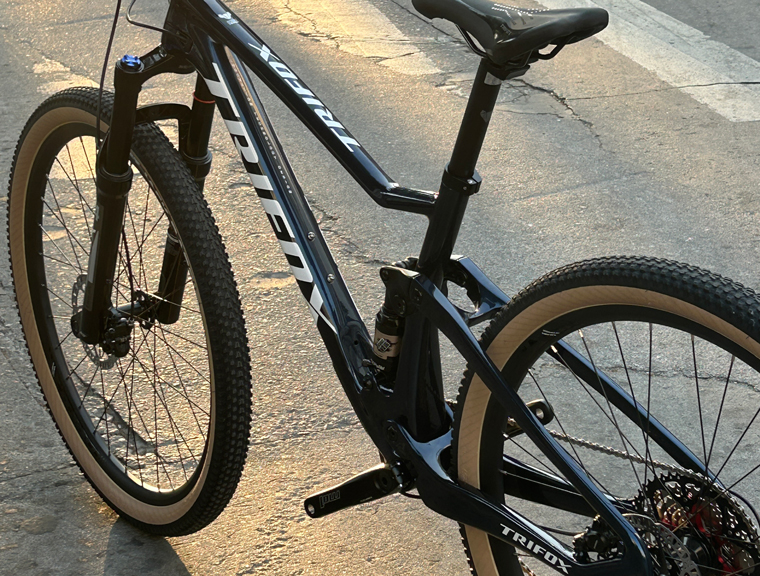
Whether you're looking to explore new trails, commute efficiently, or simply enjoy a weekend ride, the Trifox Complete Bike offers the ideal combination of versatility, performance, and comfort. Ready to ride anywhere? The all-round bike from Trifox is your perfect companion.
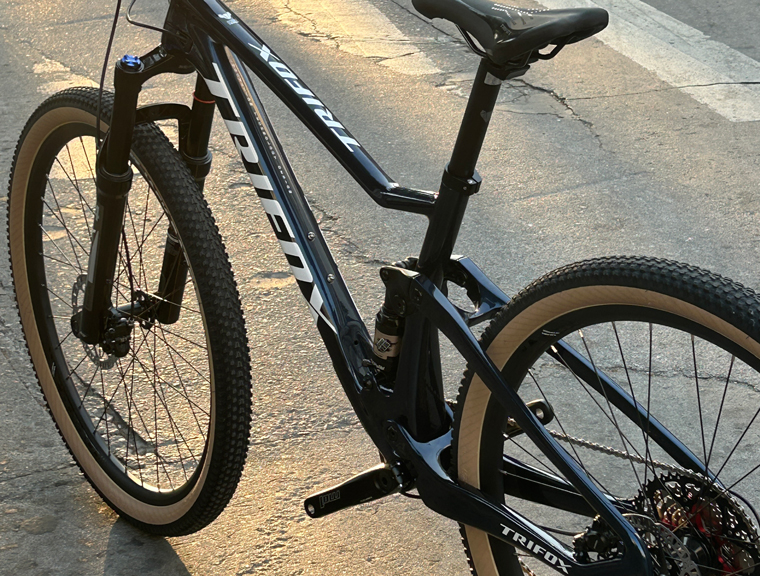
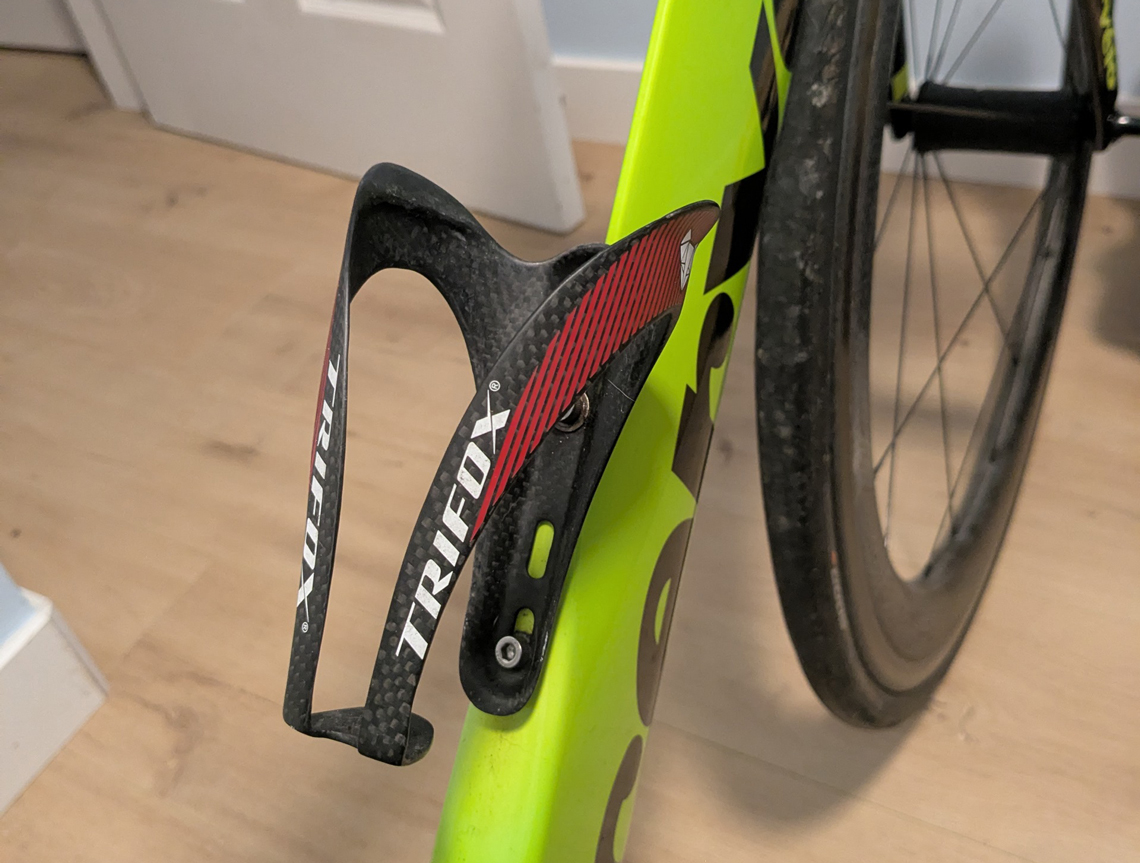
When it comes to building the perfect bike, every detail matters—especially when it comes to reducing weight and enhancing durability. One often-overlooked component in this equation is the water bottle cage. While it may seem like a minor accessory, the material and design of your water bottle cage can significantly impact your bike’s overall performance. That’s where carbon water bottle cages come into play.
1. Unmatched Weight Reduction
When it comes to competitive cycling, weight reduction is crucial, whether you're a professional racer or a recreational rider seeking peak performance. Every gram counts, especially on long climbs or when you're sprinting for the finish line.
Carbon fiber is known for its strength-to-weight ratio, meaning it is extremely light without sacrificing structural integrity. A carbon water bottle cage is typically much lighter than traditional aluminum or plastic cages. For example, the Trifox carbon bike water bottle cage weighs significantly less than its aluminum counterparts, providing a noticeable weight reduction on your bike. This reduction in weight translates directly to a more responsive, faster ride.
Even small components like the water bottle cage can make a significant impact when you're aiming to shave off grams. By choosing a carbon cage, you're optimizing your bike’s performance without compromising on strength or utility.
2. Superior Durability and Strength
While reducing weight is important, durability and strength are equally crucial, especially for cyclists who ride in rough conditions. Carbon fiber offers incredible durability, making it perfect for cycling accessories that need to withstand the elements.
Carbon water bottle cages are highly resistant to impacts, UV rays, and environmental wear. Unlike plastic cages, which can crack or break easily, carbon cages retain their shape and function even in harsh conditions. Whether you're navigating rocky terrain, enduring rough weather, or encountering accidents on the trail, a carbon cage will stand the test of time without failing.
Additionally, carbon water bottle cages are known for maintaining their integrity over long periods, unlike plastic or metal cages, which can weaken with extended exposure to sunlight or repeated use. The carbon material’s durability ensures that your bottle cage performs as well on day 100 of use as it did on day one.
3. Sleek, Aesthetic Appeal
Carbon fiber isn't just about performance—it also provides a sleek, modern look that appeals to many cyclists. Its unique texture and finish make it an ideal aesthetic match for high-performance bikes, especially for those who care about both functionality and style.
The Trifox carbon water bottle cage, for example, combines performance with elegance. The lightweight carbon frame gives the bike a sleek, sophisticated look that complements your high-end setup. Carbon’s glossy or matte finish is a perfect match for high-end carbon frames, creating a seamless, professional appearance.
Beyond looks, the design of carbon water bottle cages is typically aerodynamically optimized, further contributing to the overall efficiency of your bike. This aerodynamic advantage is a subtle yet valuable feature, reducing drag while you ride at higher speeds.
4. Tighter Fit and Easier Access
Another advantage of carbon water bottle cages is the ability to design a more precise and snug fit for your water bottle. Since carbon is a highly moldable material, manufacturers can design water bottle cages that perfectly contour to the shape of the bottle, ensuring it stays securely in place while riding. This feature can be especially beneficial for mountain bikers or cyclists riding on rough terrain where bumps could otherwise dislodge a poorly fitted bottle.
In addition to securing the bottle, carbon cages often offer easier access. The lightweight, stiff nature of carbon allows for a design that doesn’t impede quick bottle removal or insertion, which is essential for competitive cyclists or anyone who needs to hydrate quickly during a ride.
5. Enhanced Vibration Damping
One less-discussed advantage of carbon fiber is its ability to absorb vibrations. While this feature is typically associated with carbon frames and handlebars, it also applies to carbon water bottle cages. The natural vibration damping properties of carbon help reduce the road or trail noise that passes through the bike, making for a more comfortable ride overall. This is particularly useful on rougher terrain, where vibrations from the ground can be harsh, and cyclists often experience hand fatigue or discomfort.
By absorbing some of these vibrations, a carbon water bottle cage can contribute to a smoother, more enjoyable ride, especially on long-distance rides or technical trails. While it may not be as significant as the vibration dampening provided by a full carbon frame, it’s a nice added benefit to your overall biking experience.
6. Eco-Friendly and Long-Lasting
In today's environmentally-conscious world, sustainability plays an important role in product selection. Carbon fiber, although not as easily recyclable as aluminum or plastic, is extremely durable and long-lasting, reducing the frequency of replacements and contributing to less waste in the long run. When you invest in a carbon water bottle cage, you're investing in a product that can last for many years, reducing the need for frequent replacements that would otherwise end up in a landfill.
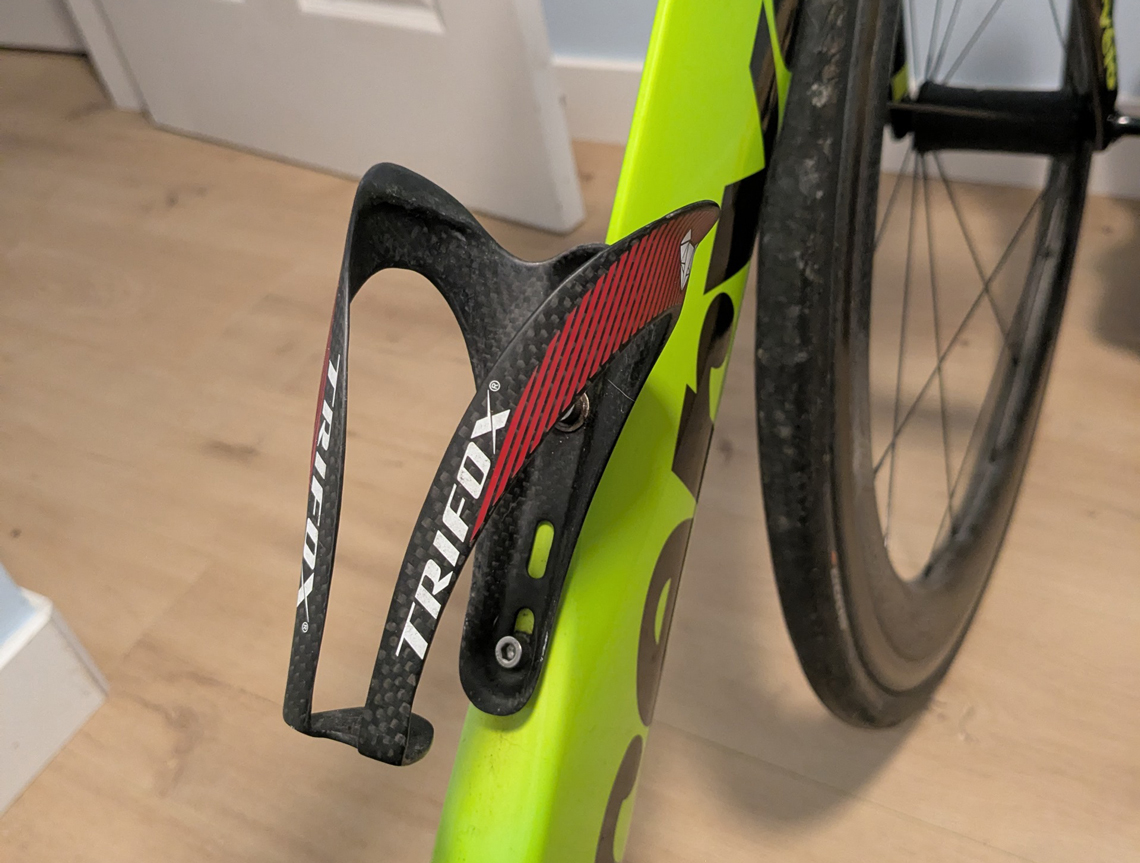
Conclusion
The carbon water bottle cage is the ideal choice for cyclists who want to achieve a balance between weight reduction, durability, and performance. With its incredibly low weight, strength, sleek design, and added comfort, it's the perfect accessory for any serious rider looking to maximize their bike's potential.
Whether you're a competitive racer, a weekend warrior, or someone who values high-quality gear, the Trifox carbon bike water bottle cage offers the durability, lightness, and style you need for the ultimate cycling experience. So, make the switch to carbon, and let your bike perform at its absolute best while staying hydrated on those long rides.

When it comes to cycling, the right bike can make a world of difference. Whether you're a seasoned cyclist or just getting started, choosing the right materials and design can elevate your performance and enjoyment on the road. One such bike option gaining traction among enthusiasts is the aluminium aero road bike. If you're in the market for a high-performance bike that offers a balance of speed, durability, and affordability, this could be the perfect choice for your next cycling adventure. But what exactly makes aluminium aero road bikes such a great option? Let’s break it down.
1. Aerodynamic Efficiency
Aerodynamics play a pivotal role in road cycling, especially if you’re looking to boost your speed and reduce fatigue over long distances. The “aero” design of these bikes is not just a cosmetic feature – it’s all about reducing wind resistance. Aluminium aero road bikes are built with sleek, aerodynamic frames that cut through the air more efficiently, allowing you to maintain higher speeds with less effort. The shape of the frame, handlebars, and even the wheels are all designed to minimize drag, giving you a noticeable advantage when racing or pushing your limits.
If you're cycling on long stretches of road or tackling challenging climbs, the aerodynamic benefits of an aluminium aero road bike can make your ride smoother and faster, helping you get the most out of your energy.
2. Lightweight Yet Strong
Aluminium is widely recognized for its excellent strength-to-weight ratio. When compared to other materials like steel or titanium, aluminium offers the perfect balance between durability and lightweight construction. A lighter bike allows for faster acceleration and better maneuverability, which can be particularly important in competitive settings or on more challenging terrains.
Unlike heavier steel frames that can feel cumbersome, an aluminium frame provides the rigidity and strength needed for a responsive and stable ride while keeping the overall weight down. This makes the aluminium aero road bike a top choice for cyclists who want to shave off seconds during a race or simply enjoy an effortless ride on hilly or winding roads.
3. Affordability and Durability
While high-end carbon fiber bikes can cost a small fortune, aluminium aero road bikes offer exceptional value without compromising on performance. For cyclists on a budget or those who are new to the sport, aluminium bikes provide a more affordable entry point without sacrificing key features like speed and durability.
Moreover, aluminium is incredibly durable and resistant to corrosion. While it may not have the same level of shock absorption as carbon fiber, it provides a solid and sturdy feel on the road, offering long-lasting reliability. This makes aluminium aero bikes an excellent choice for cyclists who want a bike that will stand up to regular use over the years, regardless of weather conditions or road surface types.
4. Versatility for Various Terrains
One of the unique advantages of the aluminium aero road bike is its versatility. Many models, like the [Trifox 700c Aluminum Alloy Aero Gravel Road Bike], are designed to handle not just smooth paved roads but also gravel and more rugged terrain. This means you can take your bike on a variety of cycling adventures – whether you're racing down a smooth highway or exploring off-road trails.
The ability to take your bike off-road adds a layer of flexibility to your cycling experience, allowing you to explore new routes without worrying about your bike’s capability to handle different types of surfaces.
5. Modern Design and Technology
Aluminium aero road bikes come with modern design elements that enhance comfort, performance, and overall ride quality. Innovations in frame geometry and componentry ensure that you’ll have a bike that handles well and is equipped with advanced technology to suit your cycling needs. Whether it's through internal cable routing for a clean look or disc brakes for enhanced stopping power in all conditions, these bikes come ready to meet the demands of both casual riders and competitive athletes alike.
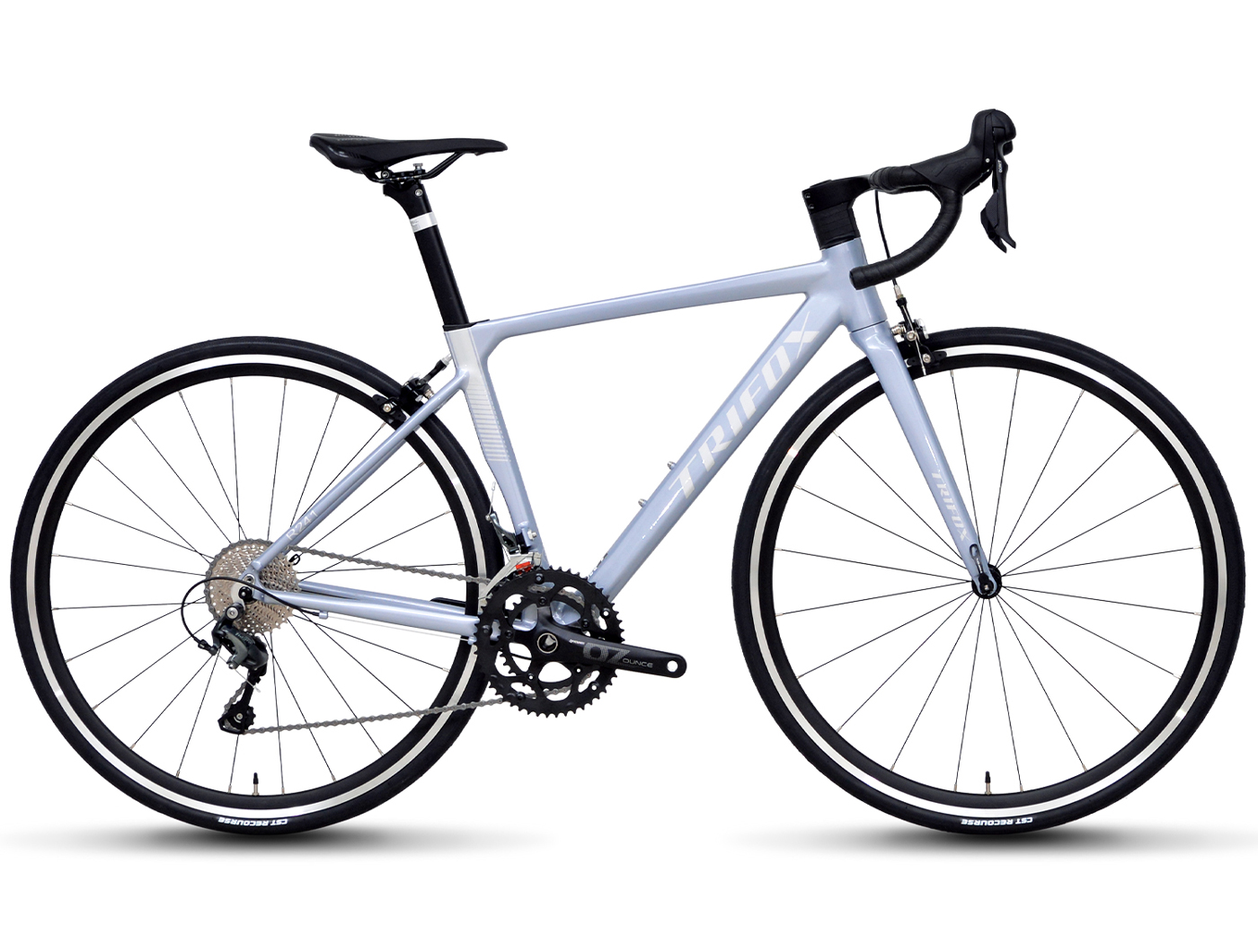
Final Thoughts
An aluminium aero road bike offers the perfect blend of aerodynamic efficiency, lightweight design, affordability, and durability. With the ability to tackle both road and gravel paths, and a host of modern features that cater to different cycling needs, it’s no wonder that this type of bike is becoming a go-to choice for cycling enthusiasts. Whether you're preparing for your next big cycling adventure or just looking to upgrade your current setup, the aluminium aero road bike is a worthy investment that promises performance, versatility, and value.
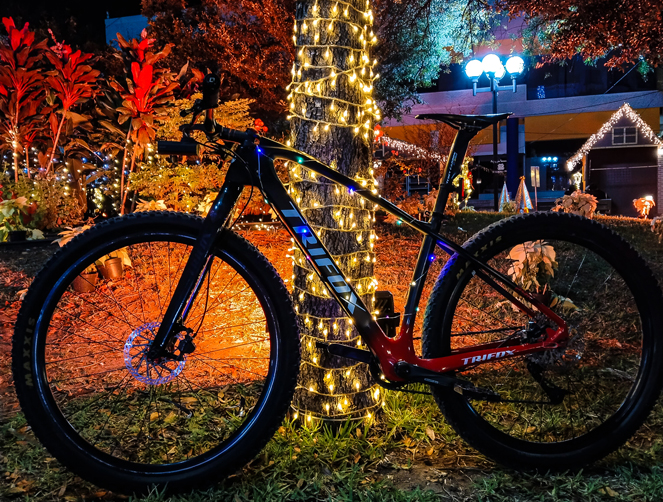
Mountain biking on tough, rugged trails can be a thrilling challenge, but it requires the right bike and technique to get the most out of every ride. If you're riding a Hardtail MTB M2 Bike, you're already ahead of the game. The Trifox M2 Bike, a hardtail mountain bike with a lightweight carbon frame, is designed to handle tough trails with ease, offering the perfect combination of speed, agility, and performance. However, to fully maximize the potential of your hardtail MTB on challenging terrain, there are a few key strategies and tips you can follow.
1. Optimize Your Tire Pressure for Better Traction
When riding on tough trails, tire pressure plays a critical role in maximizing traction and ensuring a smooth ride. Too much pressure can lead to less grip and a harsher ride, especially when hitting rocks, roots, and uneven surfaces. On the other hand, too little pressure may cause your tires to squish, increasing the chances of a pinch flat.
For the Trifox Hardtail MTB M2 Bike, consider running slightly lower tire pressure for better grip on rough trails. Typically, the ideal pressure range for mountain bike tires is between 30-40 PSI, but this can vary based on your weight, riding style, and trail conditions. Lower pressure allows your tires to conform to the terrain, increasing the surface area in contact with the ground and improving traction, especially on loose dirt, gravel, and wet conditions.
Remember to check your tire pressure before each ride, especially on tougher terrain, as it can significantly impact your ride quality and control.
2. Set Up Your Suspension for Performance
Although the Hardtail MTB M2 Bike is a hardtail, meaning it doesn’t have rear suspension, it’s still crucial to fine-tune your front suspension fork for maximum performance. The front suspension is the primary shock absorber on a hardtail, and adjusting it properly can make a world of difference when tackling rough trails.
For tougher trails, you’ll want to adjust the rebound damping and compression settings of your front suspension. If you're encountering a lot of rough, rocky terrain, a slightly higher rebound setting will allow the suspension to recover faster between bumps, giving you more control on the trail. Similarly, the compression settings can be adjusted to match the trail conditions—more compression for aggressive, technical riding or less compression for smoother trails.
The Trifox M2 Bike features a high-quality suspension fork, so take the time to experiment with different settings until you find the optimal balance for your riding style and the type of trails you frequent. Fine-tuning the suspension will help improve both comfort and control.
3. Master Your Riding Technique on Tough Terrain
While your Hardtail MTB M2 Bike is built for speed and control, how you ride it on tough trails makes a huge difference in your performance. Here are some key tips for riding efficiently on rough terrain:
Stay Loose and Relaxed: When riding over technical sections like rocks, roots, and drops, it’s important to stay loose on the bike. This means keeping your elbows and knees slightly bent, absorbing bumps with your body, and letting the bike move beneath you. Tensing up can cause unnecessary fatigue and reduce your control on the trail.
Choose Your Lines Wisely: On tough trails, you’ll need to pick the best line through obstacles to avoid unnecessary jarring impacts. Look ahead and plan your path, aiming for smoother sections of the trail while avoiding larger rocks and roots when possible.
Keep Your Pedal Stroke Smooth: Hardtail bikes require a smoother pedal stroke, especially when climbing or riding over uneven terrain. On rocky or uphill sections, try to maintain a consistent rhythm with your pedaling to avoid jarring stops or stalls.
4. Use Your Brakes Strategically
Braking is an essential skill when navigating tough trails. On a Hardtail MTB M2 Bike, you don’t have the rear suspension to help absorb the shock when you brake hard, so it’s important to use your brakes efficiently to avoid losing control.
For technical sections or steep descents, use both brakes evenly and focus on modulating them to control your speed. Avoid slamming on the brakes, especially in slippery or loose conditions, as this can cause you to lose traction and control. Instead, apply steady, controlled braking, and focus on using the front brake to slow down gradually, while the rear brake helps with stability.
5. Maintain Your Hardtail MTB M2 Bike Regularly
A key part of getting the most out of your Hardtail MTB M2 Bike is regular maintenance. A well-maintained bike will perform better and last longer, especially when it’s being subjected to the rigors of tough trails. Here are a few maintenance tips to keep your bike in peak condition:
Check your chain and drivetrain regularly for wear and tear, as rough trails can put additional strain on these components.Inspect your tires for cuts, punctures, and proper pressure. Worn-out tires can significantly reduce your traction on tough terrain.Lubricate the suspension fork to ensure it moves smoothly and absorbs shocks effectively.
6. Embrace the Hardtail Experience
Lastly, remember that riding a hardtail like the Trifox Hardtail MTB M2 Bike requires a different approach compared to full-suspension bikes. While full-suspension bikes provide more comfort on rough trails, hardtails like the M2 offer increased efficiency, lighter weight, and better pedaling performance. Embrace the challenge of the hardtail design, and use the bike’s responsiveness to your advantage on smooth sections, climbs, and sprints.
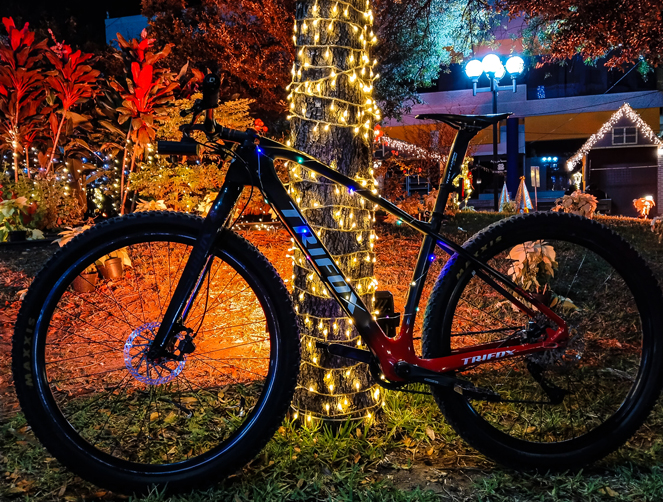
Conclusion
The Hardtail MTB M2 Bike is a fantastic choice for mountain bikers who want to conquer tough trails with efficiency and speed. By optimizing your tire pressure, fine-tuning your suspension, mastering riding techniques, and performing regular maintenance, you can get the most out of your hardtail and enjoy a smoother, more controlled ride on even the most challenging terrain. Whether you're navigating rocky descents, sharp turns, or steep climbs, your Hardtail MTB M2 Bike will help you ride with confidence and performance on tough trails.
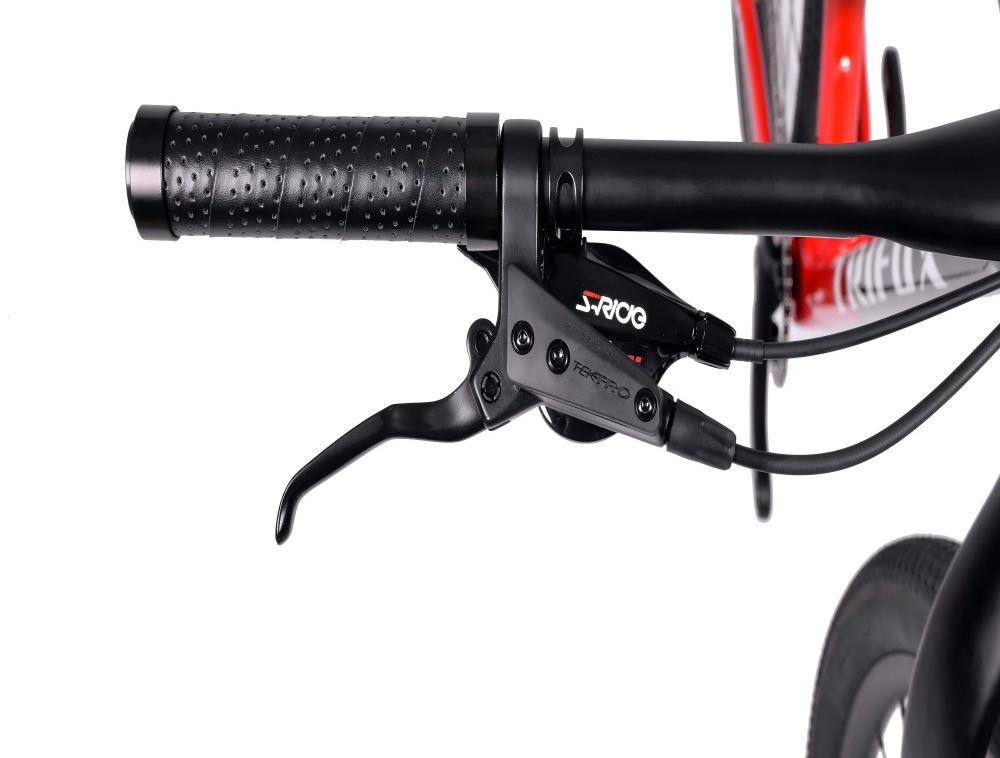
When tackling rough, rugged terrain on your mountain bike (MTB), control and comfort are paramount. The key to maintaining both lies in the often-overlooked component of your bike: the MTB grips. While they may seem like a small detail, the right grips can significantly enhance your riding experience, particularly when navigating challenging trails, rocky paths, and steep inclines.
1. Improved Grip and Stability
One of the primary functions of MTB grips is to offer a secure hold on the handlebars, especially in rough conditions. When you're riding on uneven trails, your hands can easily slip if your grips aren't designed to provide enough traction. This can be dangerous, particularly when riding downhill or over obstacles, as a lack of control can lead to accidents.
The Trifox MTB Handlebar Grip (MBT100), for example, is specifically designed to provide a non-slip surface that allows you to maintain a firm grip in all weather conditions, whether it’s wet, dry, or muddy. The textured surface and ergonomic design of these grips reduce the chances of your hands sliding, helping you stay in control even during the most aggressive rides.
2. Enhanced Comfort for Long Rides
Riding on rough terrain can be physically demanding, and if your grips are too thin or hard, they can cause hand fatigue and discomfort. Over time, the constant vibrations from bumps, rocks, and roots can lead to numbness or soreness in your hands and wrists. This is where the right MTB grips come in—designed with padding or vibration-damping materials, they can absorb much of the shock, making long rides much more comfortable.
Grips like the Trifox MTB Grips feature soft rubber compounds and ergonomic shapes that distribute pressure evenly across your palms and fingers. This cushioning effect reduces the vibrations that travel up your arms, minimizing hand fatigue and discomfort, and allowing you to ride longer without feeling the effects of rough terrain. With proper MTB grips, you can enjoy greater comfort and focus on your ride, not on the pain in your hands.
3. Increased Control Over Technical Sections
On technical trails, where sharp turns, drops, and obstacles are common, the ability to control your bike is crucial. Grips with a solid, ergonomic design give you greater leverage and precision when navigating tight corners, steep descents, and obstacles like rocks and roots. When your hands are comfortable and securely positioned, you can apply better force to the handlebars, improving your control over the bike.
The Trifox MTB Grips (MBT100) are designed with a dual-density grip pattern, ensuring a high level of traction without being overly aggressive, which allows for smooth handling of technical sections while maintaining comfort. This enhanced control is particularly valuable when riding in areas with loose gravel or mud, where stability is essential for safe, efficient riding.
4. Reduced Hand Fatigue with Ergonomic Features
In addition to cushioning and vibration dampening, many MTB grips incorporate ergonomic features that target specific areas of the hand, such as the palm and the thumb. By contoured designs or soft ridges that fit the natural shape of your hand, these grips reduce pressure on key areas, leading to less fatigue over long rides. This is especially important when riding on rough terrain, where you need to maintain a strong grip without tiring quickly.
The Trifox MTB Grips are ergonomically shaped to fit the contours of your hands, ensuring that even on the most technical trails, you can maintain a comfortable grip. Their thoughtful design also allows for natural hand movements, so you won’t have to overexert yourself to keep a steady hold on the bars.
5. Better Shock Absorption for Rough Terrain
As you navigate rough terrain, the shocks from bumps and jumps can reverberate through your bike’s frame, sending vibrations directly into your hands and arms. MTB grips designed with shock-absorbing materials can mitigate these impacts, ensuring a smoother ride. Foam or gel inserts, for example, can cushion these shocks and reduce the vibrations that could otherwise lead to discomfort or long-term injury.
With the Trifox MTB Grips, the high-quality material composition and shock-absorbing properties help reduce the impact of trail obstacles on your hands and wrists, providing additional comfort and control. This feature is particularly helpful on longer rides, where continuous vibrations could otherwise wear you down.
6. Customization for a Personalized Ride
MTB grips come in a variety of shapes, sizes, and materials, which means you can find a pair that suits your personal riding style and comfort needs. Whether you prefer thicker grips for more cushioning or thinner ones for better feedback, customizing your grips allows you to tailor your bike setup to your preferences. Additionally, grips come in different colors and designs, so you can choose a set that matches your bike’s aesthetics.
The Trifox MTB Grips offer several options for riders to personalize their setup, allowing for maximum comfort and a performance-oriented design that fits your needs on the trail. With a wide range of designs and materials to choose from, you can find the perfect grips to complement your mountain biking style.
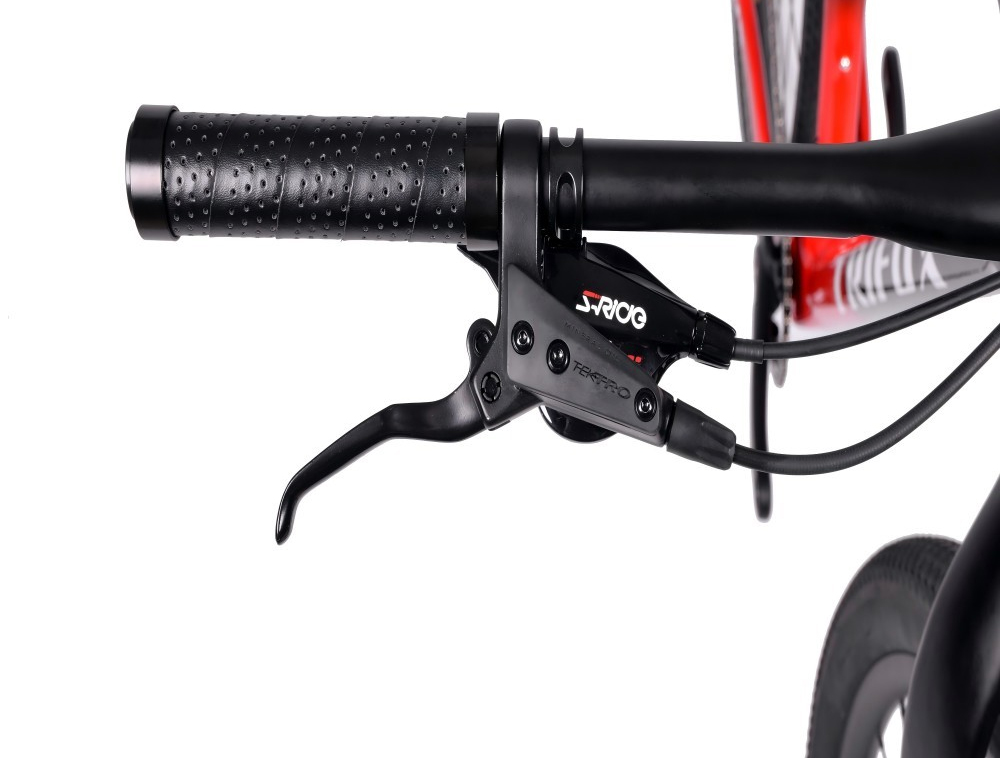
When riding on rough terrain, MTB grips play a crucial role in ensuring that you maintain control, comfort, and performance. With the right grips, you can improve your handling, reduce hand fatigue, and ride longer and harder without sacrificing comfort. The Trifox MTB Handlebar Grip (MBT100) is a perfect example of how quality grips can enhance your experience on technical trails, providing excellent traction, shock absorption, and ergonomic comfort.
If you're looking to take your mountain biking to the next level, investing in high-quality MTB grips is a smart choice. They might seem like a small detail, but the difference they can make to your control, comfort, and overall performance is anything but insignificant. Choose the right grips, and you’ll be ready to conquer any trail that comes your way.
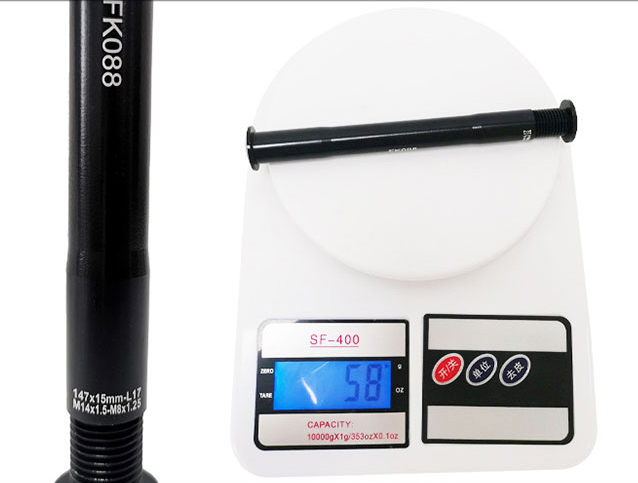
When it comes to securing your wheels on your bicycle, the thru axle skewer and the quick release skewer are two of the most common options. Both serve the same fundamental purpose: to hold your wheel in place while riding. However, they differ significantly in design, performance, and application. Understanding these differences can help you make the right choice based on your bike type, riding style, and maintenance preferences.
What is a Quick Release Skewer?
The quick release skewer (QR) is a simple, tool-free system used to attach and detach your wheels. It's a long, spring-loaded rod with a lever that tightens and loosens to secure the wheel in place. When you close the lever, the spring inside the skewer applies pressure to the wheel hub, clamping the wheel onto the fork or rear triangle of the frame.
Quick release skewers were a popular choice on many bikes, particularly road bikes and early mountain bikes, due to their convenience and ability to quickly remove the wheels for tire changes or storage. QR skewers typically have a maximum diameter of 9mm for front hubs and 10mm for rear hubs, although there are some variations.
What is a Thru Axle Skewer?
The thru axle skewer is a more modern solution that offers increased security and performance. Unlike the QR skewer, the thru axle passes completely through the wheel hub and threads directly into the frame or fork. This design provides a more rigid connection between the wheel and the frame, which is particularly beneficial for high-performance cycling, off-road riding, and disc brake systems.
Thru axles come in various sizes, typically 12mm or 15mm in diameter for front hubs, with rear hubs commonly using 12mm or 142mm thru axles. Some newer bikes use even larger diameters (e.g., 15mm or 20mm) to further increase strength and stiffness. A thru axle skewer is tightened using a tool (usually an Allen key or a special lever), which means it requires more time and effort for wheel removal and installation compared to a quick release.
Key Differences Between Thru Axle and Quick Release
1. Strength and Rigidity
One of the main differences between a thru axle and a quick release skewer is the level of rigidity they provide. A thru axle creates a much more solid connection between the wheel and the frame. Since the axle passes through the hub and threads into the fork/frame, it prevents any lateral movement or flex, which is especially important for disc brake bikes or high-performance bikes that require precise wheel alignment.
In contrast, a quick release skewer relies on clamping force applied by the lever, which doesn't provide the same level of stiffness and can sometimes lead to minor flex, particularly under heavy braking or in rough terrain.
2. Convenience vs. Security
Quick release skewers are renowned for their convenience. They can be installed or removed in seconds without the need for tools, making it ideal for quick tire changes or when you need to remove the wheels for storage or transport. It’s a favorite option for road cyclists and commuters.
However, when it comes to security, the quick release is not as robust as a thru axle. A QR skewer can be easily loosened or removed by anyone, which can be a security concern in high-traffic areas or for bikes left unattended. Some riders use locking skewers to address this issue, but this still doesn’t match the security offered by a thru axle.
Thru axles, on the other hand, are more secure because they are bolted into place with tools and are less prone to accidental loosening. This makes them a preferred choice for mountain bikers or anyone riding in rough conditions where wheel security is a priority.
3. Wheel Compatibility
A major factor in choosing between a thru axle and a quick release skewer is wheel compatibility. Quick release hubs are still very common, especially on older bikes or road bikes, and they will fit any frame or fork designed for QR skewers. However, newer mountain bikes, gravel bikes, and some road bikes with disc brakes are increasingly designed to accommodate thru axles due to their superior strength and better braking performance.
If you're upgrading your bike, make sure to check the type of dropouts (fork/frame mounts) on your bike, as they are typically designed for either quick release or thru axle compatibility. In some cases, you might need to purchase new hubs or adaptors to switch between these two axle systems.
4. Weight
In general, quick release skewers are lighter than thru axles. This can be important for road cyclists or competitive riders who are trying to reduce bike weight to the absolute minimum. While the weight difference is relatively small, every gram counts when you're aiming for peak performance.
Which One is Right for You?
The choice between a thru axle skewer and a quick release skewer depends on your cycling needs:
Quick Release: Ideal for road cyclists, commuters, and those who prioritize convenience and ease of wheel removal.
Thru Axle: Best suited for mountain bikers, riders with disc brakes, or anyone looking for increased wheel stiffness and security.
If you're upgrading your bike or considering the difference for your next bike purchase, the Trifox Alloy Front Thru Axle Skewer is a great example of a high-performance, durable solution for modern bikes. It provides the security, strength, and reliability you need, especially for boost forks and disc brake setups.
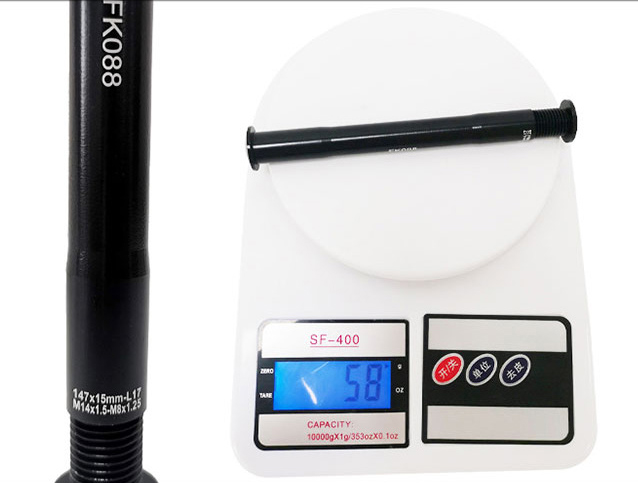
Understanding the key differences between thru axles and quick release skewers is essential for choosing the right one for your bike. Thru axles offer enhanced security and rigidity, making them ideal for mountain biking and disc brake setups, while quick release skewers excel in convenience and are great for lighter, more casual rides.
Evaluate your bike's compatibility, your riding style, and your preferences before making a decision. Whichever you choose, ensuring your wheels are securely attached will give you a safer and more enjoyable ride.
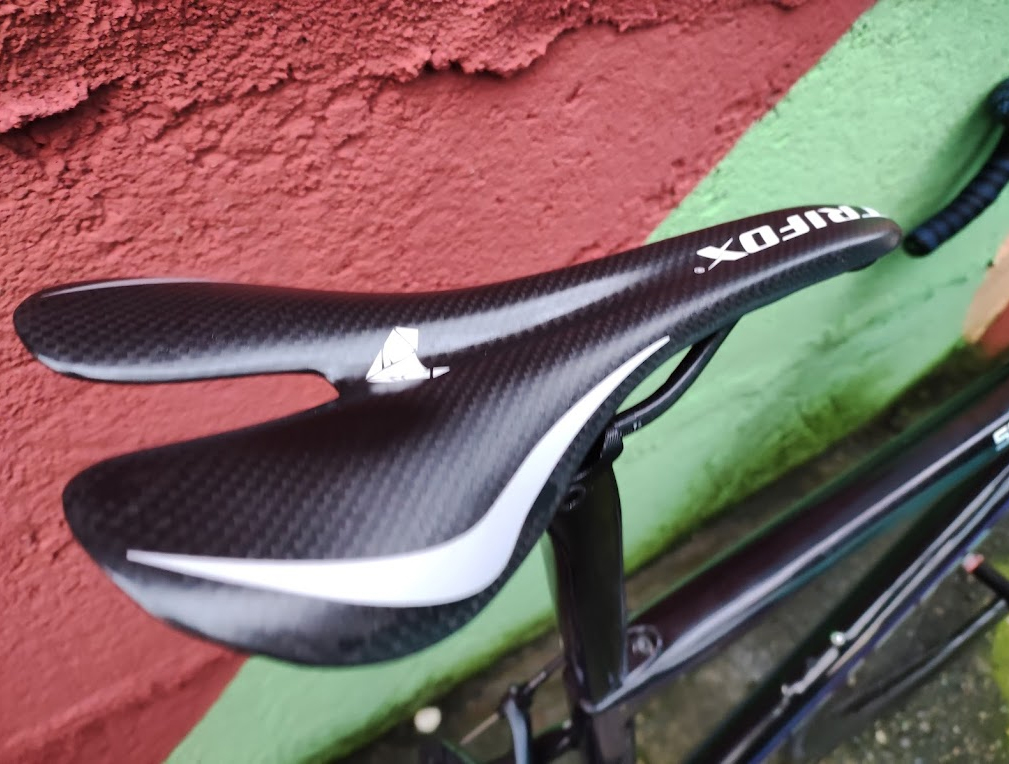
One of the most critical components of a bicycle that directly affects your comfort on long rides is the bicycle saddle. The right saddle can make all the difference between a smooth, enjoyable cycling experience and an uncomfortable, painful one. If you’re spending hours in the saddle, you’ll quickly notice how crucial comfort is. However, with so many options available, how do you find the most comfortable bicycle saddle for your specific needs?
1. Consider Your Riding Style
First and foremost, your saddle choice should align with the type of cycling you do. Different cycling disciplines demand different saddle features:
Road Cycling: For long rides and high-performance cycling, a road saddle is typically narrower with a lightweight design. It supports an aggressive riding position, focusing on aerodynamics and minimal friction.
Mountain Biking (MTB): MTB saddles are generally wider and more padded, offering extra comfort for off-road terrain. These are designed to handle rough trails and provide support when cycling through challenging landscapes.
Commuting or Casual Cycling: If you’re cycling for leisure or commuting, a saddle with more padding and a comfortable design will help you ride longer distances without discomfort.
Understanding your riding style is crucial to picking the right saddle, as each type offers distinct features that cater to your specific needs.
2. Evaluate Saddle Shape and Width
Saddle shape is vital in ensuring proper support. The most important factor here is your sit bones—the bony parts of your pelvis that make contact with the saddle. A saddle that’s too narrow or too wide can create pressure points, leading to discomfort.
Wide Saddles: These are better suited for people with wider sit bones or those riding in a more upright position.
Narrow Saddles: These are ideal for riders with narrower sit bones or those who ride in a more aggressive, forward-leaning position.
When selecting a saddle, try to get an accurate measurement of your sit bones, either by visiting a bike shop or using an online guide to determine the appropriate width. Many high-quality saddles come in various widths to suit different body types.
3. Choose the Right Padding and Material
While cushioning is important, more padding doesn’t always equate to more comfort. Too much padding can lead to chafing and discomfort, especially if you’re cycling for long periods. Instead, look for padding that’s dense but comfortable, and made of materials that allow air circulation to reduce sweat and heat buildup.
Gel Padding: Offers excellent comfort and shock absorption. Ideal for short to medium-distance rides.
Foam Padding: More common in performance-oriented saddles. It’s lightweight and provides sufficient comfort while avoiding the bulk of thicker gel inserts.
Carbon Fiber or Synthetic Materials: High-performance saddles often use carbon fiber or lightweight composites for strength, durability, and minimal weight.
The Trifox Carbon Bike Saddle is a perfect example of this. Combining lightweight carbon with memory foam padding, it offers the right balance of comfort and performance, ensuring a smooth ride over long distances while keeping the overall bike weight low.
4. Test Different Options
When shopping for a saddle, comfort is key. If possible, visit a bike shop that allows you to test ride different saddles. Test them on your bike, ride for a few miles, and pay attention to how your body feels. Some bike shops also have saddle fitting services that can help you select the right saddle based on your anatomy and riding style.
For a quick but effective way to narrow down your options, consider the Trifox Carbon Bike Saddle, which offers an ergonomic design that conforms to your body shape, providing excellent comfort without compromising performance.
5. Look for Durability and Quality
Comfort is crucial, but durability matters just as much. A high-quality saddle will last longer, hold up to daily use, and maintain its shape and comfort over time. Look for saddles that are well-constructed with strong materials like carbon fiber, titanium, or stainless steel rails, as they offer better durability and weight savings.
The Trifox Carbon Bike Saddle is engineered to be both durable and lightweight, featuring a carbon fiber base and high-quality cover materials designed to withstand long hours of cycling without losing shape.
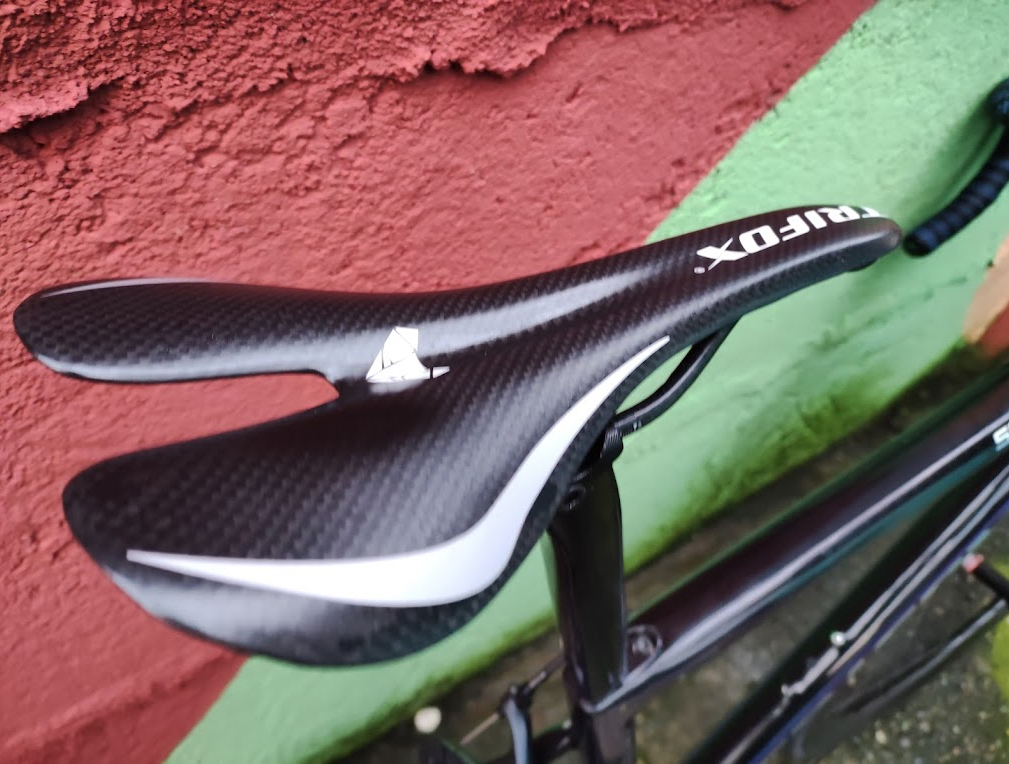
Finding the most comfortable bicycle saddle is essential for improving your ride experience. Consider your riding style, saddle shape, width, padding, and materials when making your choice. Testing different saddles is also a great way to find what works best for you. For riders looking for high-performance comfort, the Trifox Carbon Bike Saddle is a great option, combining lightweight carbon with memory foam for the perfect balance of comfort and durability.
By selecting the right saddle, you'll not only enhance your comfort but also improve your cycling performance, making every ride more enjoyable.
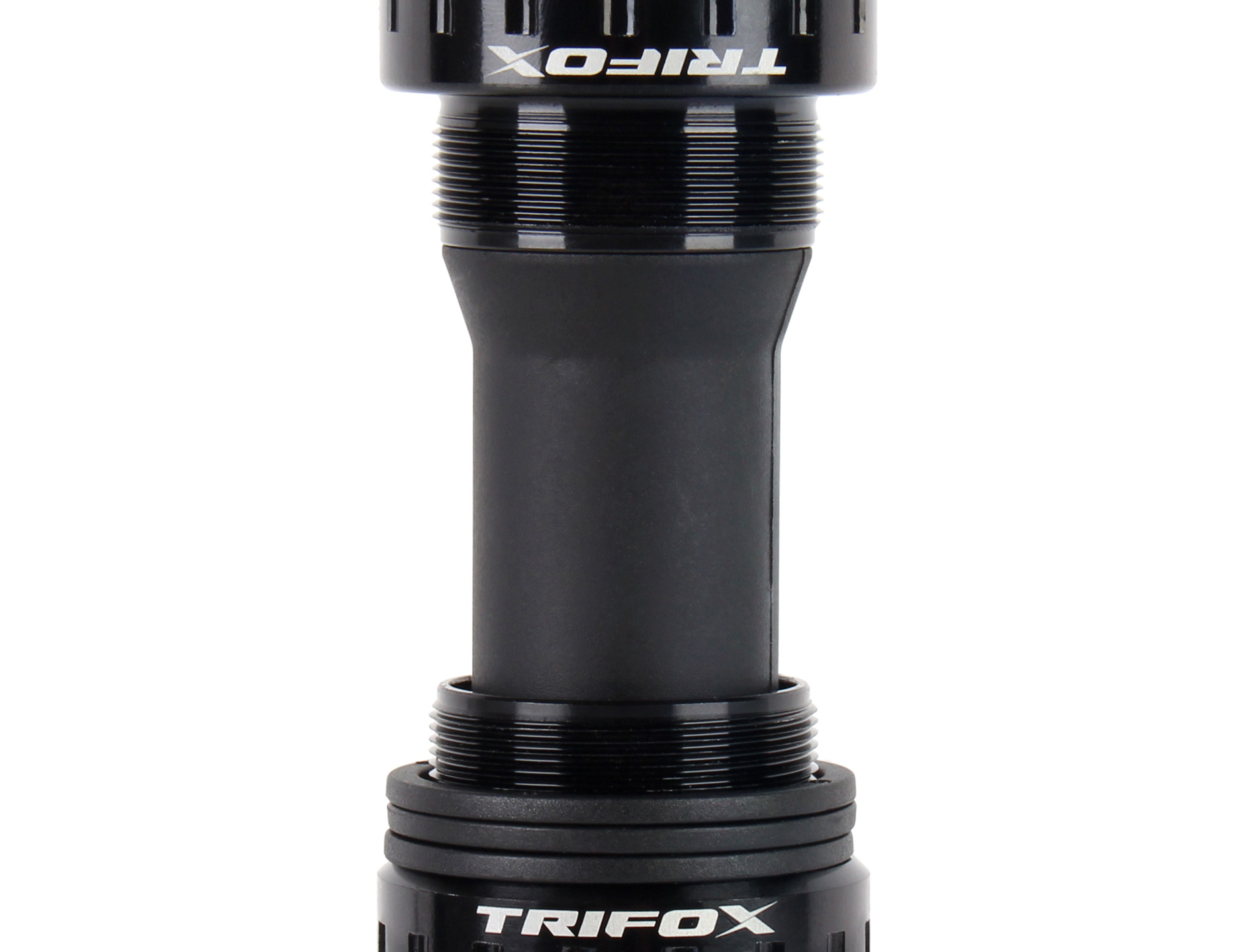
When it comes to bicycles, many cyclists tend to focus on components like wheels, frames, or gear systems, but one crucial part that is often overlooked is the bottom bracket. This small but vital component plays an essential role in your bike's performance, comfort, and overall ride quality. If you're wondering what exactly a bicycle bottom bracket is and how it impacts your ride, you're in the right place.
What is a Bicycle Bottom Bracket?
The bottom bracket is the part that connects your bike's crankset (the pedals and chainrings) to the frame. It's located in the bottom bracket shell, which is part of the frame, and it allows the cranks to rotate smoothly. The bottom bracket consists of a spindle that runs through the frame and connects the left and right crank arms. Bearings are used within the bottom bracket to enable smooth rotation and minimize friction.
Essentially, the bottom bracket serves as the interface between your cranks and your bike frame, allowing you to transfer power from your legs to the wheels. It might be a small and seemingly insignificant component, but without it, pedaling would be difficult and inefficient.
Types of Bottom Brackets:
There are several types of bottom brackets, each designed for specific frame types and rider needs. The two main categories are threaded and press-fit bottom brackets.
-Threaded Bottom Brackets: These are the traditional type and screw directly into threaded holes on the frame. They tend to be easier to install and maintain, making them a popular choice for many road and mountain bikes.
-Press-Fit Bottom Brackets: Instead of threads, press-fit bottom brackets rely on being pressed directly into the frame using a special tool. These are commonly found on modern bikes and are known for being lighter, but they can be more difficult to install and maintain.
The choice between these two types depends largely on the design of your bike frame and the level of performance you're seeking.
How Does the Bottom Bracket Affect Your Ride?
The bottom bracket, although often overlooked, has a significant impact on the performance of your bike. Here's how it affects your ride:
1. Pedaling Efficiency: A well-maintained bottom bracket allows for smooth and efficient power transfer from your legs to the cranks. If the bearings inside the bottom bracket are of high quality, the cranks will rotate smoothly with minimal friction, making pedaling feel effortless. Poorly maintained or low-quality bottom brackets can result in rough pedaling, which wastes energy and can make the bike feel sluggish.
2. Crankset Alignment and Ride Comfort: The bottom bracket also affects the alignment of your crankset. If the bottom bracket is incorrectly installed or of poor quality, it can cause misalignment, which leads to discomfort, poor pedal stroke mechanics, and potential injuries over time. Ensuring that your bottom bracket is installed correctly and is in good condition is key to achieving optimal crank arm alignment.
3. Weight Considerations: As with most bike components, weight is a crucial factor. Carbon fiber and high-grade aluminum bottom brackets tend to be lighter than their steel counterparts, which is an important consideration for competitive cyclists. A lighter bottom bracket can help shave a few grams off the overall weight of your bike, contributing to a more responsive and agile ride.
4. Durability and Maintenance: The bottom bracket’s durability directly impacts how often it needs maintenance. High-quality bottom brackets are designed to last longer and require less frequent servicing. However, bottom brackets that are exposed to the elements or suffer from neglect can wear down quickly, leading to poor performance and the need for replacement.
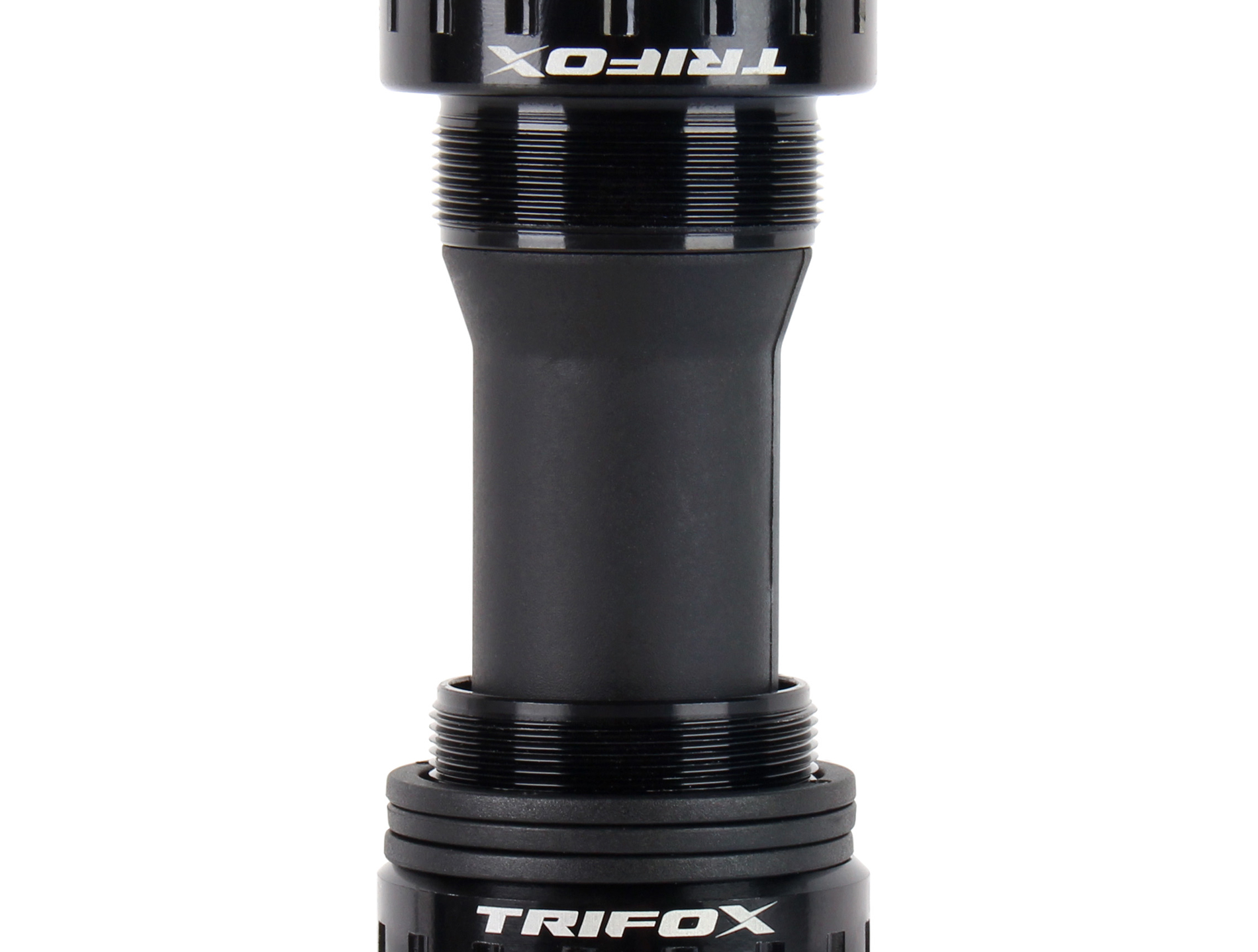
In short, the bottom bracket is a small but crucial component of your bike. It affects everything from pedaling efficiency and ride comfort to crankset alignment and bike weight. By understanding its function and ensuring it’s properly maintained, you can improve your ride quality and performance, making your cycling experience more enjoyable and efficient. If you’re unsure about the condition of your bottom bracket, consider having it checked by a professional mechanic to avoid unnecessary issues on your rides.

When it comes to cycling, the idea of a "one-size-fits-all" bike is simply not a reality. Every cyclist is unique, with different body types, riding styles, and needs. Whether you're a seasoned racer, a commuter, or a casual weekend rider, finding the right bike can make all the difference in your comfort, performance, and overall enjoyment. In this blog post, we’ll explore how you can choose the perfect bike for your needs and highlight some great options, such as the Trifox Disc Brake Carbon Road Bike Frame X10, that can accommodate a wide range of riders.
1. Understanding the Basics of Bike Fit
The first step in selecting a bike is understanding the importance of bike fit. A well-fitting bike can reduce discomfort, improve efficiency, and prevent injuries. When choosing a bike, there are several factors to consider, including frame size, geometry, and the type of riding you plan to do. A road bike frame, for instance, will differ from a mountain bike frame in terms of angles, material, and design to suit the intended riding environment.
If you're new to cycling or uncertain about your fit, it’s worth visiting a local bike shop where professionals can help you find the right size and adjust the bike for your specific body measurements.
2. Versatility of the Trifox X10 Carbon Road Bike Frame
A perfect example of a bicycle suitable for a wide range of riders is the Trifox Disc Brake Carbon Road Bike Frame X10. This bike is designed with versatility in mind, offering a comfortable ride for both beginners and more experienced cyclists. Whether you're using it for commuting, weekend rides, or racing, this carbon road bike frame can be customized to meet various rider needs.
The X10 frame is made from high-quality carbon fiber, which provides a lightweight yet durable structure. Carbon fiber is known for its ability to absorb vibrations, offering a smoother ride over rough surfaces. Additionally, carbon frames can be stiffer than aluminum, improving power transfer, making the X10 ideal for riders who want an efficient bike for both speed and comfort.
3. Frame Geometry for Different Riders
The geometry of a bike frame determines its overall fit, comfort, and handling characteristics. The Trifox X10 features an aerodynamic and balanced design, with a slightly relaxed riding position that is comfortable for long rides without compromising speed. The frame is designed to accommodate different riders, from those who prioritize comfort to those who prefer a more aggressive, race-ready position.
For beginner cyclists or those who spend most of their time on flat roads, a more upright position may be preferable. The X10's geometry allows for easy adjustment of handlebars and saddle to create a more comfortable, relaxed posture. For more experienced riders or those seeking performance on faster rides, the aggressive drop of the handlebars can position the rider lower and forward, reducing wind resistance for improved aerodynamics.
4. Disc Brakes for All Conditions
One of the key features of the Trifox X10 is its disc brake system, which provides better stopping power in all weather conditions. Whether you're riding in the rain or on steep hills, disc brakes offer superior performance compared to traditional rim brakes. This makes the bike suitable for a variety of riders, including those who live in areas with challenging weather conditions or who like to explore diverse terrains. Disc brakes also provide more control and stability, which is especially important for newer riders or those who prioritize safety.
5. Customization and Future-Proofing
The Trifox X10 is built with future-proofing in mind. As cyclists' needs evolve, the ability to customize your bike is crucial. The frame can be paired with a variety of components, such as wheels, handlebars, and saddles, to suit personal preferences. This flexibility ensures that the bike grows with the rider, offering long-term value and adaptability.

Finding the perfect bike doesn’t have to be a daunting task. Whether you're a beginner or an experienced cyclist, there are plenty of options that cater to different needs. The Trifox Disc Brake Carbon Road Bike Frame X10 is a great example of a versatile bike suitable for a wide range of riders.
With its lightweight carbon frame, customizable fit, and advanced disc brake system, the X10 ensures that cyclists of all experience levels can enjoy a smooth, comfortable, and safe ride. So, take the time to explore your options and choose the bike that fits your unique riding style — your perfect fit is out there!

























































